Table of Contents
Interior Lighting in Cars: Enhancing Ambiance and Functionality
What is ambient lighting ?
Interior lighting in cars has evolved significantly from the basic dome lights of the past to the sophisticated, customizable LED systems we see today. Modern interior lighting not only enhances the aesthetics and ambiance of a vehicle but also improves safety and functionality. In this article, we’ll explore the various aspects of car interior lighting, including its types, benefits, customization options, and future trends.
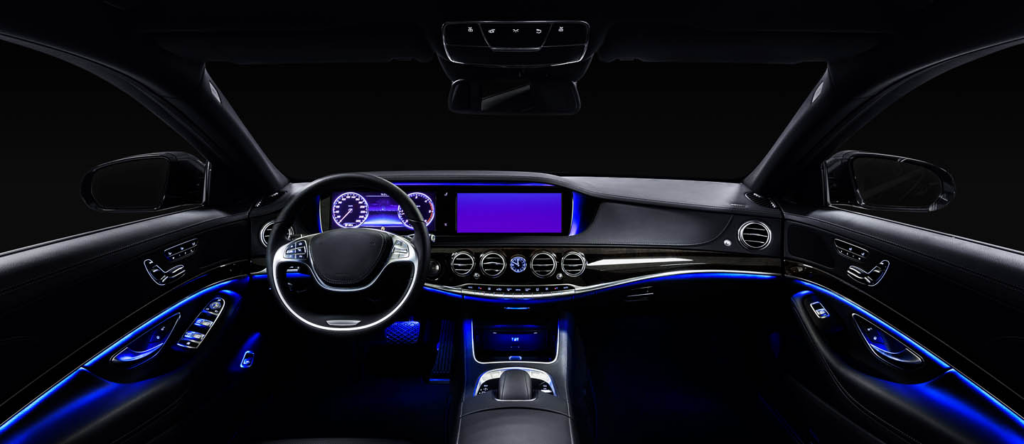
Types of Interior Lighting in car
1. Ambient Lighting
Ambient lighting refers to the soft, indirect lighting that illuminates the car’s interior without causing glare. It’s often used to create a pleasant atmosphere and highlight interior design elements. Common placements include the dashboard, footwells, door panels, and cup holders.
2. Task Lighting
Task lighting is designed to assist with specific activities, such as reading maps, finding items, or operating controls. Examples include map lights, glove compartment lights, and trunk lights.
3. Accent Lighting
Accent lighting highlights specific areas or features within the car, such as the edges of seats, door handles, or the gear shifter. This type of lighting is primarily decorative and adds a touch of elegance and style to the vehicle’s interior.
4. Functional Lighting
Functional lighting encompasses essential lighting elements, such as dome lights, courtesy lights, and entry/exit lights. These lights ensure visibility and safety when entering or exiting the vehicle and performing routine tasks inside the car.

Benefits of Interior Lighting
1. Enhanced Aesthetics
Interior lighting can transform the look and feel of a car’s cabin, creating a luxurious and inviting environment. Customizable colors and lighting patterns allow drivers to personalize their space according to their mood or preference.
2. Improved Safety
Proper lighting is crucial for safety, especially at night. Well-placed lights help drivers and passengers see controls, locate items, and move around the car without tripping or fumbling.
3. Increased Functionality
Task-specific lighting, such as reading lights and illuminated buttons, makes it easier to perform various activities inside the car. This is particularly important for long journeys or when using the car as a mobile office.

Case Study: Ambient Lighting Issue in a Mercedes E-Class W213 (2017)
Ambient lighting Car Mercedes
In modern vehicles, ambient lighting enhances both the aesthetics and functionality of the car’s interior. However, like any other component, it can sometimes encounter issues. This case study explores an incident involving a 2017 Mercedes E-Class W213, where a problem with the ambient lighting system was resolved through professional diagnostics and repair.
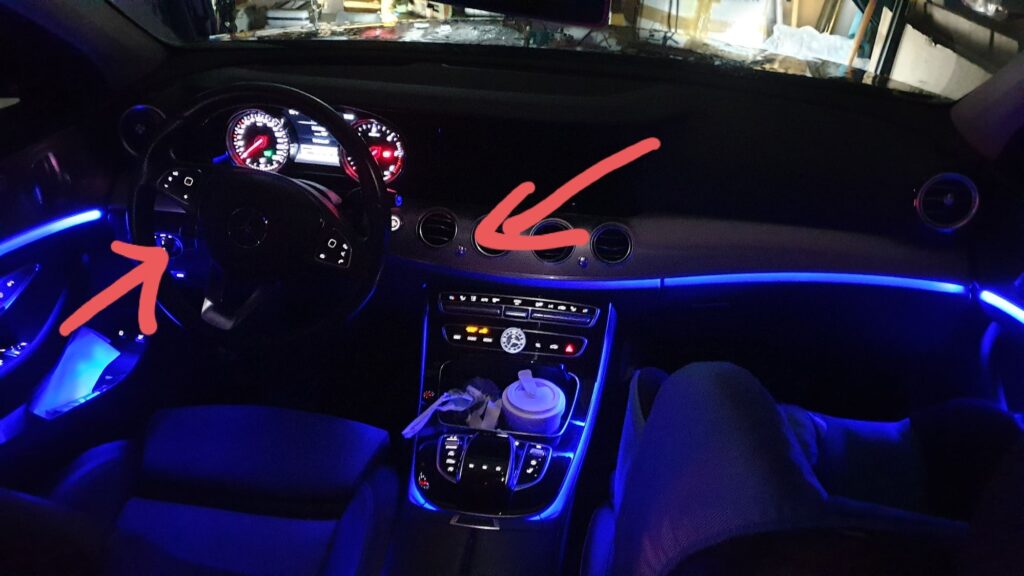
Background
A Mercedes E-Class W213 owner reported a malfunction with the car’s ambient lighting system. Specifically, the left part of the ambient lighting was not functioning. Given the importance of ambient lighting for both safety and comfort, the owner decided to take the vehicle to a Mercedes dealership for diagnosis and repair.
Diagnostic Process
Step 1 : Initial Inspection
Upon arrival at the dealership, the vehicle was assigned to a qualified technician. The technician began with a visual inspection to confirm the owner’s complaint and noted that the left section of the ambient lighting was indeed not working.
Step 2 : Using the STAR Diagnosis Device
To delve deeper into the issue, the technician utilized the STAR Diagnosis device, a specialized tool for diagnosing problems in Mercedes vehicles. The device revealed a “Bus LIN Ambient Lighting Error” recorded in the ambient lighting control unit.
Step 3 : Checking the BUS LIN Wiring
Understanding that the issue was related to the Bus LIN system, the technician proceeded to check the wiring. Using a multimeter, a standard tool for measuring electrical current, voltage, and resistance, the technician tested the continuity and integrity of the Bus LIN wiring associated with the ambient lighting system.
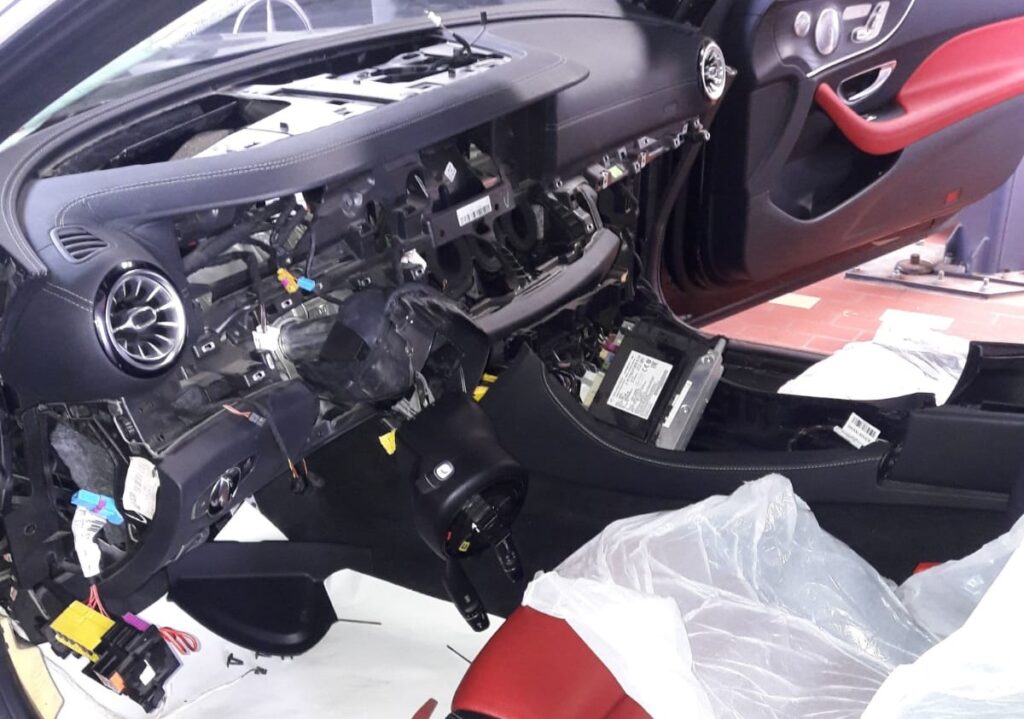
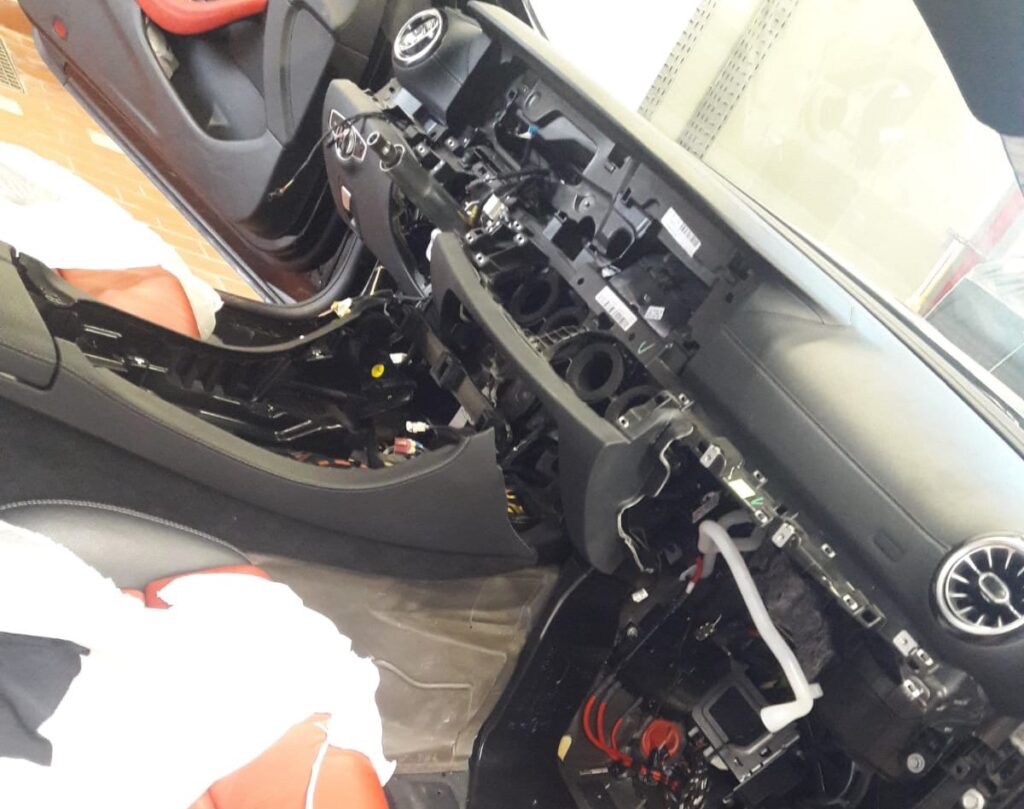
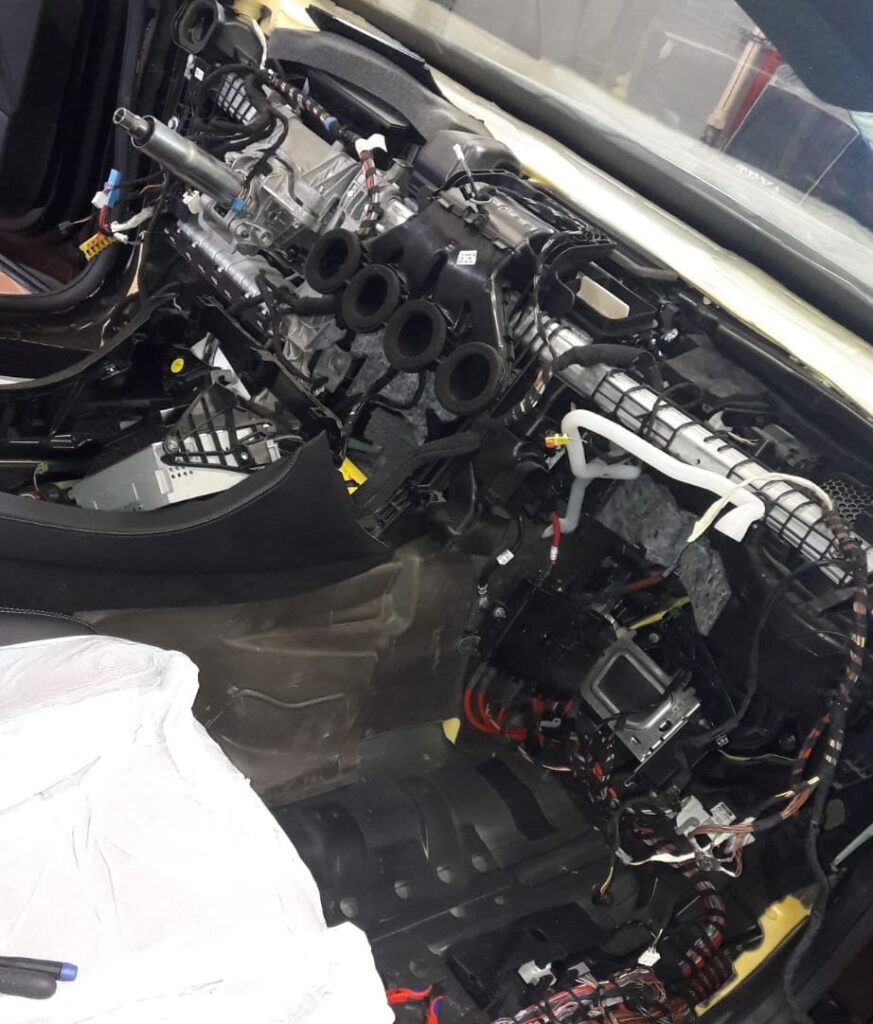
Identifying the Fault
The multimeter readings indicated that the fault lay within the light strips themselves. This necessitated further intervention, as simply addressing the wiring would not resolve the issue. The light strips, integral to the ambient lighting system, required replacement.
Repair Process
Step 1 : Replacing the Light Strips
To replace the faulty light strips, the technician had to replace the electrical harness for the dashboard side ambient lighting. This process involved:
- Carefully removing the dashboard panels to access the electrical harness.
- Disconnecting the old light strips and removing the faulty electrical harness.
- Installing a new electrical harness and connecting new light strips.

Step 2 : Testing the New Installation
After the new light strips and electrical harness were installed, the technician reconnected all components and powered up the system. The ambient lighting system was tested to ensure that the left part was now functioning correctly alongside the rest of the system.
Results
The replacement of the light strips and electrical harness successfully resolved the issue. The ambient lighting on the left side of the vehicle was restored to full functionality, much to the satisfaction of the vehicle owner.

Conclusion
This case study highlights the importance of proper diagnostic tools and techniques in addressing issues within advanced vehicle systems like ambient lighting. By using the STAR Diagnosis device and a multimeter, the technician was able to accurately identify and resolve the fault, ensuring the vehicle’s ambient lighting system was back in optimal condition.
Customization Options
1. LED Technology
LED lights are energy-efficient, long-lasting, and available in a wide range of colors. Many modern cars come with LED ambient lighting that can be customized via the infotainment system or a dedicated app.
2. RGB Lighting
RGB lighting systems allow for an extensive range of color customization. Users can choose from millions of colors and create dynamic lighting effects, such as color cycling or pulsing to the beat of the music.
3. Smart Lighting
Smart lighting systems integrate with the car’s electronics and can be controlled via voice commands, smartphone apps, or the infotainment system. They can also adapt to driving conditions, such as dimming when the car is in motion or changing color based on speed.
Future Trends
1. Integration with Autonomous Vehicles
As autonomous vehicles become more prevalent, interior lighting will play a key role in creating a comfortable and functional space for passengers. Expect to see more advanced lighting systems that can adapt to different activities, such as working, relaxing, or socializing.
2. Health and Wellness Features
Future interior lighting may incorporate health and wellness features, such as lights that adjust to support circadian rhythms, reduce eye strain, or provide calming effects during stressful situations.
3. Sustainable Lighting Solutions
With a growing focus on sustainability, future lighting systems will likely use even more energy-efficient technologies and eco-friendly materials. Solar-powered lights and lights made from recycled materials are potential developments in this area.

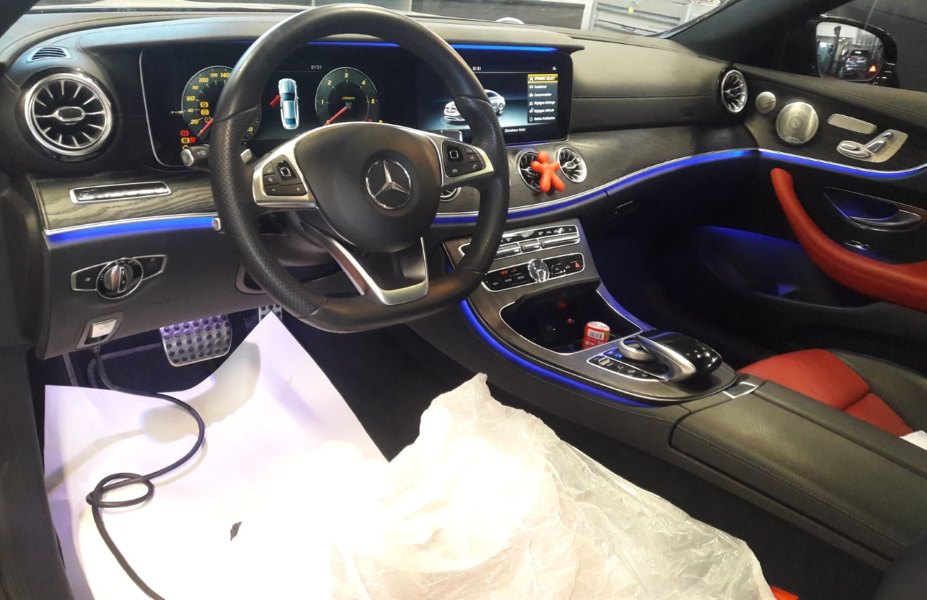




Leave a Reply